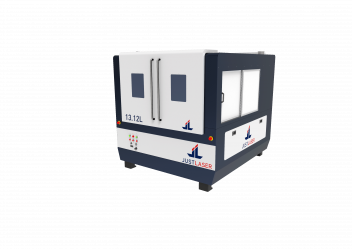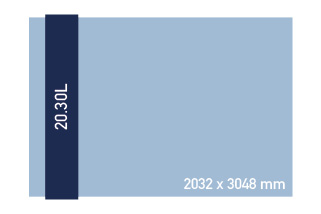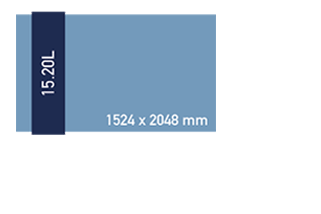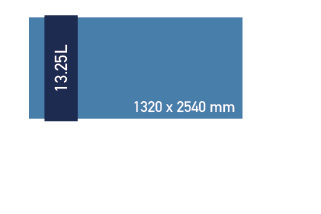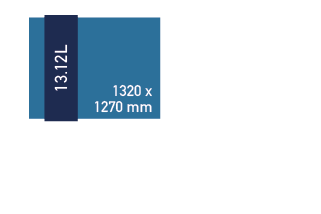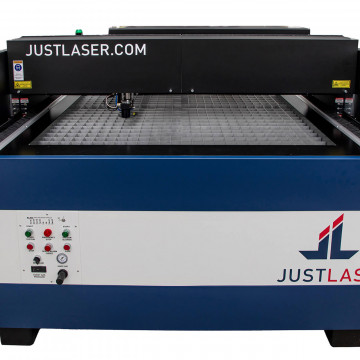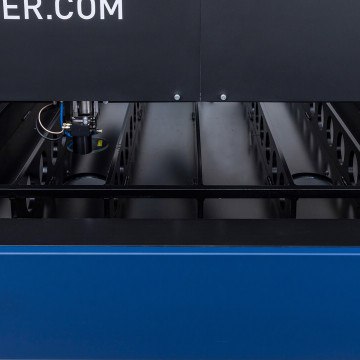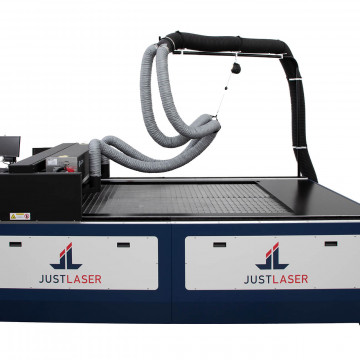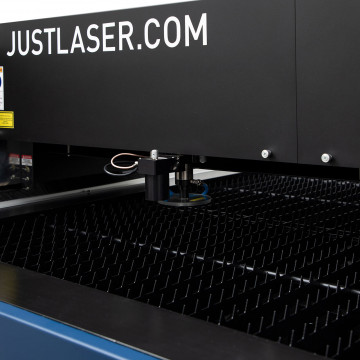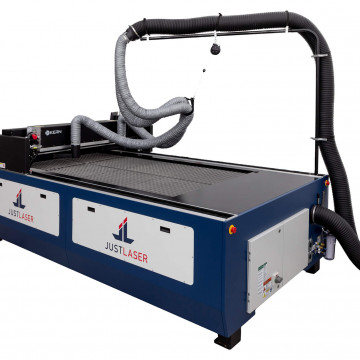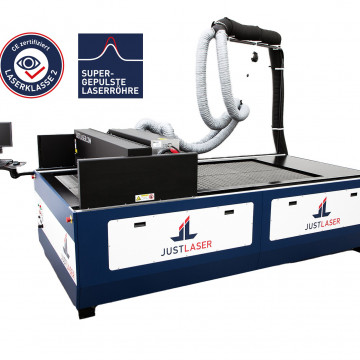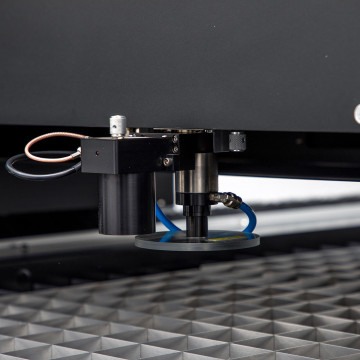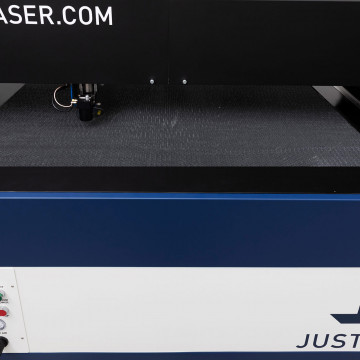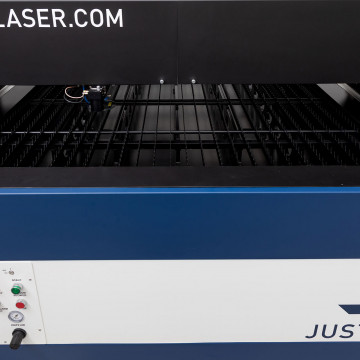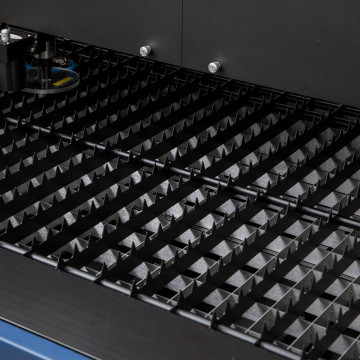HYPER-DUAL MOVEMENT
The hyper-dual system for the portal axis on our laser cutter has an EC servomotor on each side which moves the portal using a sprocket and (fixed) cograil. The two motors are perfectly synchronised to each other, thus ensuring the axis runs smoothly and without any issues. The robust, generously-sized mechanical structure can convert high, even jerky torques from the servomotors into strong acceleration with simultaneous precise positioning and long service life. Positioning and repetition accuracy is realised in terms of control technology by 24-bit encoders of the motors and the fast DSPs. This means that we can often exceed our customers’ requirements with regard to axis dynamics and precision.
Benefit from our safety systems: emergency stop switches, laser safety goggles and a sealed beam path between the laser source and delivery nozzle tip are just some of the safety features for the JustLaser system. This and much more means that the JustLaser Large Laser Cutter is the only laser in its class that is officially CE-certified for laser class 2 (for processing organic materials). More information on laser class 2 here!
Each JustLaser Large Laser Cutter comes with a high-performance computer with a Windows operation system. Connecting the computer to the laser is simple thanks to Ethernet technology and the KCAM laser software.
IMPROVED VACUUM
Vapours produced during the engraving process can be efficiently absorbed with a newly designed portal vacuum. Thanks to the improved vacuum, metal sheets can be safely stabilised, and any vapours produced during the laser cutting process can be drained outside.
PROGRAMMABLE COMPRESSED AIR
When installing the metal-cutting option, you can connect and use up to three gas supplies simultaneously. By way of an example, this means you could quickly pierce stainless steel with oxygen, and automatically switch over to nitrogen for the cutting profile. This gives you a result with a shiny edge quality and a burr-free cut.
SUPER-PULSED LASER TUBES 
Each JustLaser Large Laser Cutter comes with a super-pulsed laser tube. This means more output for your applications because super-pulsed means that the laser tubes provide much more than the purchased output in individual peaks. A 650W laser tube can supply more than 2,000W (2kW) of peak power for a brief period. This means a super-pulsed laser tube can, for example, help produce less browning on cut edges as the high peak performance means the material in the cutting gap evaporates faster and the short interaction duration inhibits heat conduction. The power is directed into a smaller, defined volume, which in turn means that the cutting groove is reduced.


